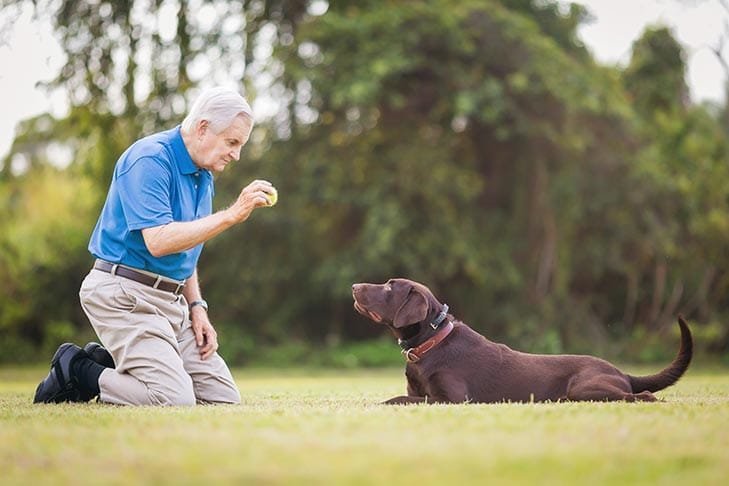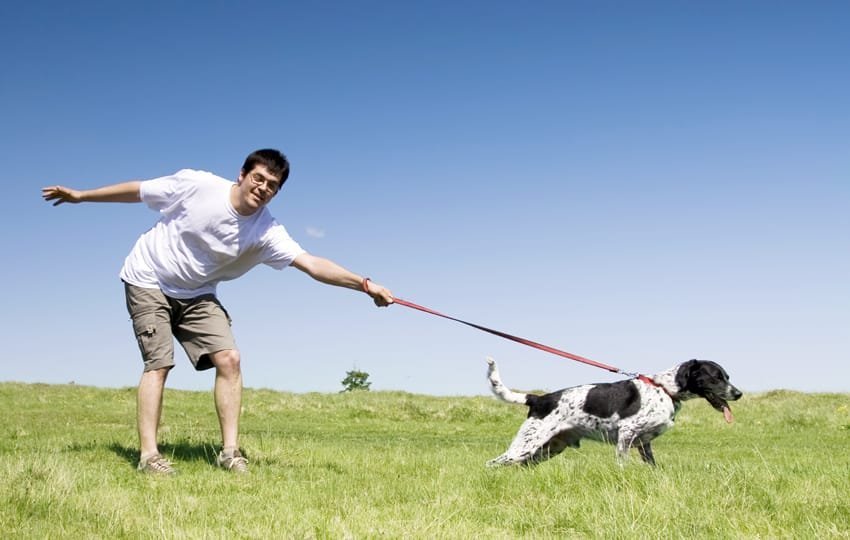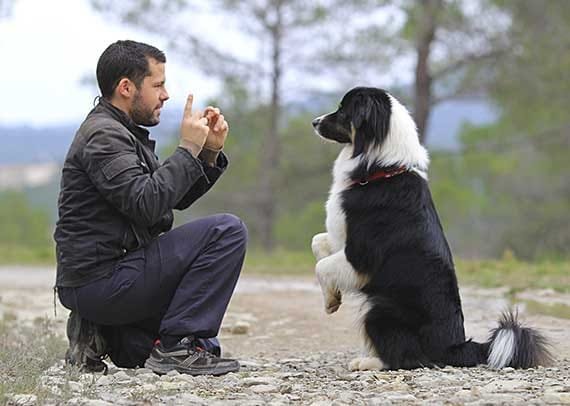- March 30, 2025
Smart Master, Smarter Dog: The Complete Guide to Raising an Intelligent and Well-Mannered Puppy.

Any dog can be intelligent, but it requires a dedicated owner to shape their entire intelligence. Training a dog is not only about giving commands—it’s about developing a good relationship, understanding behavior, and using correct methodologies to shape a well-mannered and responsive dog.
With more pet owners focusing on obedience training and mental stimulation, the process of raising a well-mannered dog has changed as well.
Why Some Dogs Are Smarter Than Others
Dogs do not all learn equally fast. Intelligence in dogs is established by genetics, breed, environment, and how they are trained.
Three types of dog intelligence exist, according to dog psychologist Stanley Coren.
- Instinctive Intelligence – The natural abilities a dog possesses (guarding, retrieving, herding).
- Adaptive Intelligence – A dog’s capacity to learn from experience and solve problems.
- Obedience & Work Intelligence – How well the dog obeys and how well the dog works with people.

Breeds That Are Highly Intelligent
Although all dogs are trainable, certain breeds are instinctively faster learners. Some of the most popular smart breeds are:


- Border Collies – Amazing problem solvers and rapid learners.
- Poodles – Extremely versatile and perform very well in obedience classes.
- German Shepherds – Famous for their utility in service work.
- Golden Retrievers – Gentle, easy to train, and great with families.
- Labrador Retrievers – Energetic, eager to please, and quick learners.
Training a dog has nothing whatsoever to do with dominance—it’s all about consistency, trust, and positive reinforcement.
The Smart Master’s Mindset: How to Train Effectively.
1. The Power of Positive Reinforcement
Experiments confirm reward-based training is much superior to punishment training. Reward good behavior in your dog with the assistance of:
- Treats – Balanced small rewards used for reinforcement.
- Aptitude – The raised voice can be as powerful as food.
- Playtime – Games like fetch may be employed as rewards.

2. Consistency is Key
Dogs adore routines. Disorganized training confuses them and stops them from learning. Follow:
- Clear directions – Use short words like “Sit” instead of “Sit down.”
- Same hand signs – Dogs can learn visual signs faster than words.
- Practice regularly – Regular short practice is more effective than irregular long practice.
3. Know Your Dog’s Learning Ability
Not all dogs learn at the same pace. Some learn immediately, and others need more practice. Be patient and adapt your training style to their learning.
Step by Step Training Manual for Intelligent Dog
Step 1: Master the Basics
Every appropriately trained dog starts with basic obedience commands that build the foundation of more advanced training.
- Sit
Place a treat close to your dog’s nose.
Pull your hand up, inviting their bottom down.
Say “Sit” and reward them if they comply.
- Stay
Command your dog to sit.
Extend your hand and command, “Stay.”
Back away, rewarding them when they can stay quiet.
Gradually increase distance to improve impulse control.
- Come
Call your dog in a happy, cheerful voice.
Reward them when they return to you.
This is an off-leash safety command and a runaway prevention command.

Step 2: Make Your Dog’s Intelligence Work
After they have learned the basics, give them exercises that stimulate their minds.
1. Naming Objects for Recognition
Dogs are able to learn over 100 words with training. Start with everyday objects like:
- “Get your leash.”
- “Find your ball.”
- “Where’s your toy?”
This maximizes problem-solving ability and memory.
2. Impulse Control and Patience
Dog training in self-control strengthens obedience and focus. Useful commands are:
- “Leave it” – Stops them from grabbing food or things.
- “Wait” – Prevents running through doors or jumping into cars.
- “Gentle” – Tells them to take treats gently and not to nip.
3. Hide-and-Seek and Problem-Solving Games
Interactive assignments encourage critical thinking:
Puzzle toys require dogs to labor for rewards.
Hide-and-seek also teaches problem-solving and memory.
Scent games enhance focus and mental stimulation.
Training in Actual Situations
A good dog isn’t only well-behaved at home—they should act well in real-life scenarios.
1. Socialization with Humans and Other Dogs
Proper socialization avoids aggression and anxiety. Socialize your dog to:
- Different environments – Parks, cafes, sidewalks.
- Various people – Strangers, children, delivery staff.
- Other dogs – Playdates under supervision help reinforce good behavior.

2. Leash Training Good Behavior
Most dogs pull on the leash due to excitement. In order to correct this,
- With a no-pull harness for greater control.
- Stoop at once if they pull—teaching quiet walking.
- Train “Heel” to get them to walk beside you.
3. Preparing for Outdoor Adventures
If you are going to bring your dog to dog parks, hiking trails, or beaches, your dogs must be
trained for:
- Off-leash recall – Ensuring they come back when called.
- Avoiding distractions – Practice with wildlife or loud noises.
- Respecting borders – Applying regulations in public arenas.
Avoiding Common Training Mistakes

Even good-intentioned owners do it wrongly. Here’s what not to do:
1. Inconsistency
Switching between different commands or allowing undesirable behavior sometimes but not all the time confuses dogs.
2. Overuse Treatment
Treats are great for encouraging, but excessive use can lead to bribery instead of learning. Wean them off slowly and praise or use toys instead.
3. Indoor Training Only
Dogs have to generalize commands in various environments. Train in a number of environments so that they will obey in any environment.
The Use of Technology in Training
With new equipment, training is easier than ever.
Favourite Smart Training Aids:
- Clickers – Provide sound feedback for reinforcing behaviors.
- GPS Collars – Offer protection and track activity levels.
- Smart Cameras – Keep an eye on behavior when home alone.
The majority of pet owners today use interactive toys and AI-based devices to keep their dogs occupied when they are occupied or away at work.
A Brilliant Master Trains a Brilliant Dog

It’s more about trust, good habits, and keeping their brains active when you train an intelligent dog, rather than tricks.
Key Takeaways:
✔ Use positive reinforcement for lasting consequences.
✔ In line with expectations and orders.
✔ Engage their intellect with puzzles and problem-solving games.
✔ Socialize them early so that they become accustomed to different environments.
✔ Make it a habit to walk in public places or to a new destination daily. A well-trained dog is healthier, happier, and a joy to have around. With the right attitude and skills, you can bring your furry friend to its full potential and deepen your relationship for many years to come.
Tags
What do you think?
Related Articles

How to Measure Your Dog for the Perfect Fit : A Complete Guide for Every Pet Parent
Why Measuring Your Dog Matters Ever brought a cute outfit for your pup only to realize it’s either too tight or way too loose? It

The Rich Heritage of Batik in Sri Lanka: A Legacy of Art, Culture, and Craftsmanship.
Batik is more than just fabric—it’s a centuries-old art form that tells stories through wax, dye,and intricate patterns. Found in cultures across the world, from

How Animal Therapy Is Supporting Mental Health in Australia.
In a country where mental illness is on the rise, a soft but potent treatment method is coming to the fore—animal-assisted therapy. Across Australia, therapy
